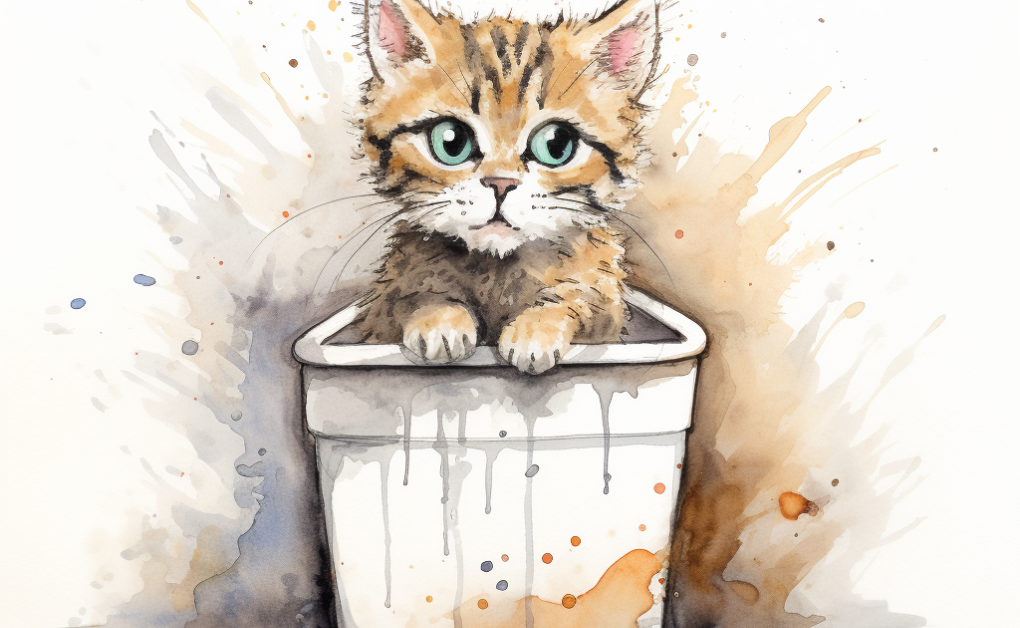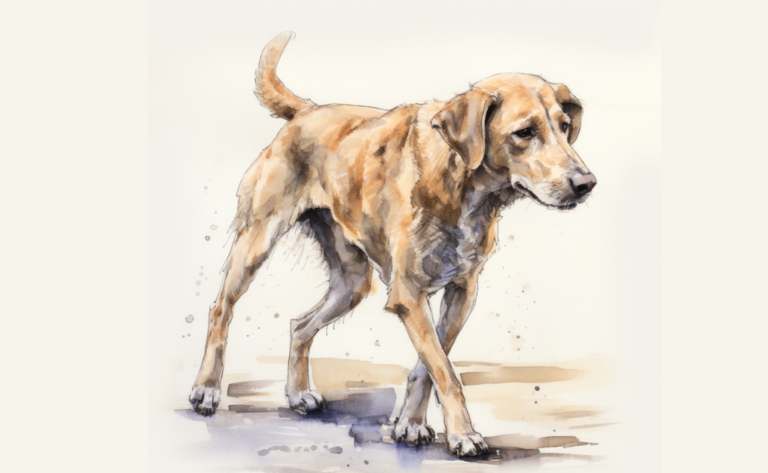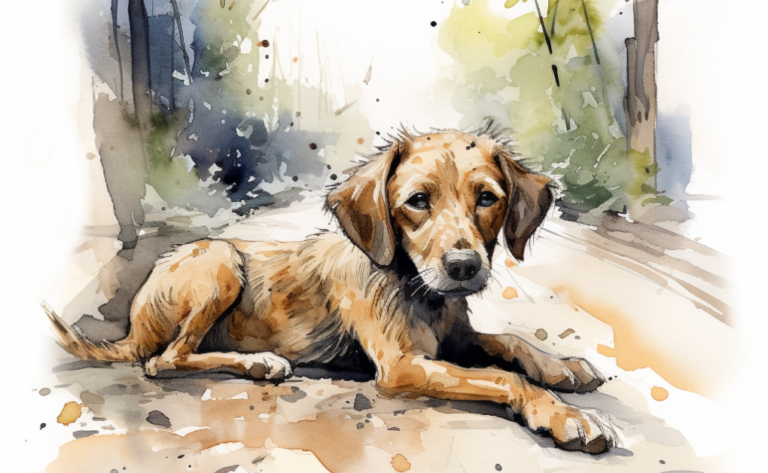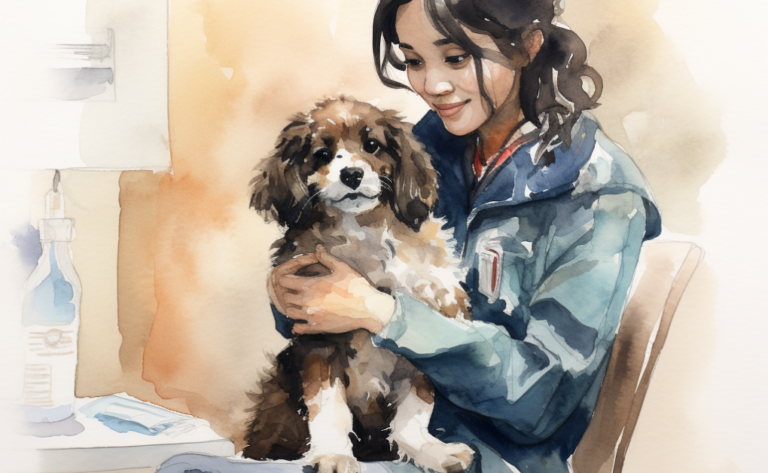What is Urinary Disease in Cats?
What is it?
How is it Treated?
Breed Predispositions
There are no specific breeds of cats predisposed to urinary diseases. However, male cats are more prone to developing urinary tract blockages and related complications than female cats.
Introduction
When Bella, an energetic and curious Russian Blue cat, began showing signs of discomfort while using the litter box and making frequent trips to it, her owner, Mark, knew something was amiss. Concerned for Bella’s health, he took her to their trusted veterinarian for an examination. After conducting a series of tests, the veterinarian Bella diagnosed Bella with urinary disease, a condition that can affect cats of all breeds and ages.
Urinary disease in cats denotes a spectrum of conditions that can disrupt the urinary tract’s function, encompassing the kidneys, bladder, ureters (tubes transferring urine from the kidneys to the bladder), and urethra (tube conducting urine from the bladder out of the body). Whenever a cat encounters a urinary tract issue, it signals a disruption or malfunction in one or more components of this system.
One manifestation of these issues is Urolithiasis, contributing to roughly 10-15% of Feline Lower Urinary Tract Disease (FLUTD) cases. Urolithiasis forms small solid masses within the urinary system, often termed bladder stones in cats. These deposits commonly develop in the kidneys but may also occur in the bladder or urethra, or even the penis.
This urinary tract issue can occur in cats of all ages and sometimes lead to kidney failure. It’s important to note that some cats are more likely to develop urinary diseases than others. Consequently, monitoring for signs of urinary disease is critical, especially if your cat is in a high-risk group. Identifying and addressing these problems with their lower urinary tract can help avoid distressing situations for your cat and potentially serious health risks. Most commonly, urinary disease in cats is caused by a urinary tract infection or obstruction, like bladder stones.
Types of Urinary Disease in Cats
Several types of urinary diseases can affect cats. Each type has its characteristics and can present with different symptoms. Here are some common types of urinary disease in cats:
Urinary Tract Infections (UTIs)
UTIs occur when bacteria or other pathogens invade the urinary tract, leading to infection. UTIs can affect the bladder (cystitis) or the kidneys (pyelonephritis). Symptoms of UTIs may include frequent urination, straining to urinate, blood in the urine, and discomfort during urination.
Feline Lower Urinary Tract Disease (FLUTD)
FLUTD is a general term encompassing various conditions affecting cats’ lower urinary tract. It is often characterized by bladder inflammation (cystitis) but can also include urinary stones, urethral obstruction, and other urinary issues. Symptoms of FLUTD can include frequent urination, difficulty urinating, bloody urine, and urinating outside the litter box.
Urinary Stones
Urinary stones, also known as uroliths or bladder stones, are mineralized deposits that can form in the urinary tract. Different stones, including struvite, calcium oxalate, and urate stones, can occur. Stones can cause irritation, inflammation, and blockages in the urinary tract, leading to symptoms such as painful urination, blood in the urine, and urinary accidents.
Feline Idiopathic Cystitis (FIC)
FIC is a condition characterized by bladder inflammation without an identifiable cause. It is a diagnosis of exclusion, meaning other potential causes of urinary issues, such as infections or stones, have been ruled out. FIC is believed to be influenced by multiple factors, including stress, diet, and individual cat characteristics. Symptoms of FIC can include frequent urination, straining to urinate, blood in the urine, and urinating outside the litter box.
Urethral Obstruction
A urethral obstruction occurs when something, such as a urinary stone or mucus plug, blocks the urethra and prevents the cat from urinating. This is a medical emergency and requires immediate veterinary attention. Male cats are more prone to urethral obstruction due to their narrower urethra. Symptoms of urethral obstruction include straining to urinate, vocalization or discomfort during urination attempts, and complete inability to urinate.
These are just a few examples of urinary diseases that can affect cats. It’s important to note that each cat is unique, and the specific type and severity of urinary disease can vary. Prompt veterinary attention is essential to diagnose the specific type of urinary disease and develop an appropriate treatment plan for the affected cat.
What Causes Urinary Tract Problems in Cats?
Cats can experience many urinary diseases, each with its causes and potential urinary issues. Some prevalent causes of urinary disease in cats include:
Urinary Tract Infections (UTIs)
UTIs arise when harmful bacteria or other pathogens invade the urinary tract, resulting in infection. Escherichia coli and Staphylococcus are common bacteria linked to UTIs in cats. These infections can induce inflammation, discomfort, and urination difficulties. Owing to their shorter urethra, female cats are more susceptible to UTIs.
Urinary Stones or Uroliths
Urinary stones, also known as uroliths or bladder stones, are mineralized deposits that can form anywhere within the urinary tract. These stones can vary in size and composition, with struvite, calcium oxalate, and urate stones being the most common types. Urinary stones can trigger urinary tract irritation, inflammation, and blockages.
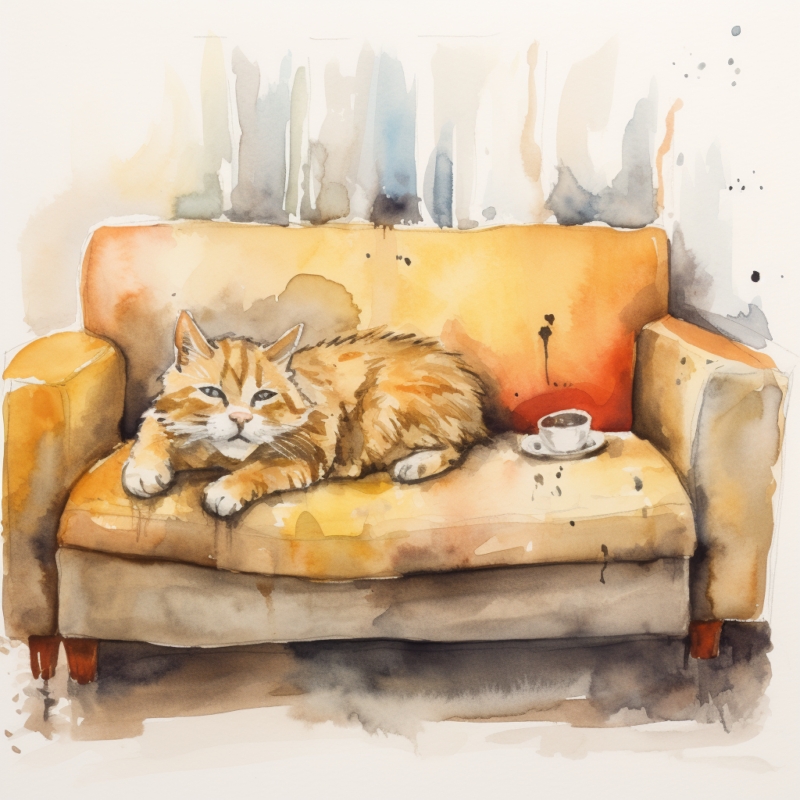
Feline Lower Urinary Tract Disease (FLUTD)
FLUTD represents a collection of urinary disorders that impact cats. The exact cause of FLUTD remains elusive, but it’s believed to be influenced by factors such as stress, diet, obesity, and inadequate water consumption. Symptoms of FLUTD can vary widely, including frequent urination, difficulty urinating, blood in urine, and instances of urinating outside the litter box.
Feline Idiopathic Cystitis (FIC)
FIC is a condition marked by bladder inflammation without a clear cause. This condition is complex and multifactorial, influenced by stress, diet, and the individual characteristics of the affected cats. Symptoms of FIC closely mirror those of FLUTD.
Urinary Obstruction or Urethral Obstruction
Urinary obstruction transpires when an object, such as a stone or mucus plug, obstructs urine flow from the bladder. Male cats are also more susceptible to urinary obstructions due to their narrower urethra. Obstructions are a serious urinary tract issue that can be life-threatening and necessitate immediate veterinary care.
Other Causes
Other sources of urinary disease in cats encompass urinary tract tumors, bladder or kidney infections, urinary incontinence, and anatomical abnormalities.
Notably, stress and diet can influence multiple urinary conditions in cats. Determining the root cause of a cat’s urinary disease is vital for devising an effective treatment strategy and averting future occurrences. Diagnostic tests a veterinarian performs can help identify the cause and shape a suitable treatment plan.
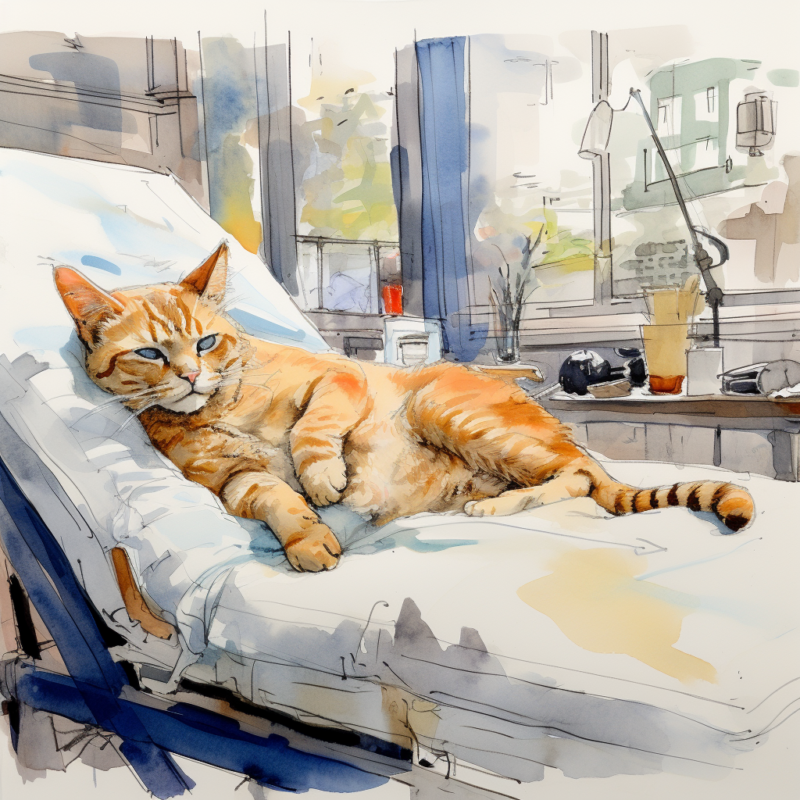
Signs and Symptoms of Urinary Tract Health Problem in Cats
Indications of urinary disease in cats can widely differ, hinging on the specific type of urinary issue. Certain bladder or urinary issues might not manifest obvious symptoms, while others can trigger painful or bloody circumstances. Some signs suggestive of a urinary tract infection (UTI) in cats may encompass the following:
- The emergence of a foul or robust-smelling urine
- Blood appearing in the urine, a sign that might underscore issues with the lower urinary tract or a bladder stone
- A marked increase in the frequency of urination
- Struggling or showing strain while urinating, a clear indicator of a urinary problem
- Vomiting episodes
- Involuntary bowel movements, a symptom of a weak bladder
- Excessive grooming or licking of the genital region
- Observable lethargy or diminished energy levels, common signs of disease
- The onset of fever
- Unexplained weight loss
- A decreased appetite, potentially linked to problems with the lower urinary system
These urinary symptoms might suggest your cat may have problems related to a urinary disease and should dictate a visit to the vet for further investigation and treatment. The veterinarian will examine the severity and cause of the urinary issues to prescribe the most suitable treatment, such as treatment for FLUTD, if needed. It’s crucial to suspect your cat may be unwell if these symptoms present, as early detection of a urinary issue can facilitate more effective treatment.
Diagnosis of Urinary Disease in Cats
Diagnosing urinary diseases in cats, such as a cat urinary tract infection or urethral blockage, involves various techniques veterinarians employ to collect important information and identify the core problem. Here are some typical diagnostic methods:
Physical Check-up and Historical Background
An exhaustive physical evaluation of the cat marks the starting point of the diagnosis process. The veterinarian inspects the overall health, detects signs of pain or discomfort, and performs palpation of the abdomen to evaluate the condition of the bladder. In addition, they might query about the cat’s medical history, changes in behavior, litter box habits, and any significant symptoms.
Urinalysis
Urinalysis is essential in assessing the urinary system’s health, which includes testing a sample of the cat’s urine. The analysis identifies blood, bacteria, crystals, or other anomalies. It furnishes key insights into kidney function, infection, and urine pH levels. In some cases, based on pH, urinary acidifiers might be advised.
Imaging Diagnostics
Imaging techniques like X-rays and ultrasounds provide visual insights into the urinary tract. X-rays can help spot urinary stones or other irregularities, while ultrasound facilitates a more comprehensive inspection of kidneys, bladder, and other urinary structures, such as the cat’s urethra. These techniques assist in diagnosing conditions like bladder stones, kidney abnormalities, and urethral obstructions.
Blood Examination
Blood tests could be conducted to assess kidney function, verify electrolyte balance, and search for systemic conditions contributing to urinary diseases. These tests can reveal signs of kidney malfunction, track organ health, and identify any imbalance or abnormality in the blood chemistry.
Bacterial Culture and Sensitivity Test
A bacterial culture and sensitivity test may be conducted if a urinary tract infection is suspected. This process involves lab-based cultivation of a urine sample to identify the specific bacteria responsible for the infection. Sensitivity testing aids in determining the most effective antibiotics to combat the identified bacteria.
Biopsy
In certain circumstances, a biopsy may be needed. This involves collecting a small tissue sample from the bladder, kidneys, or other affected areas for microscopic analysis. It can aid in diagnosing conditions like bladder cancer, chronic kidney disease, or inflammatory disorders.
The specific diagnostic strategy will rely on the cat’s symptoms, physical examination findings, and the suspected cause, regardless of whether the cat is female or male. Combining information from various diagnostic techniques, including understanding problems with their lower urinary system, enables veterinarians to accurately diagnose urinary diseases in cats and formulate a personalized treatment plan, particularly if the cat is diagnosed with a urinary tract disease or is at risk of kidney failure.
Treatment for Urinary Disease in Cats
The therapeutic approach to urinary disease in cats hinges on the specific condition identified by the veterinarian. Below are some prevalent treatments implemented for a variety of feline urinary problems:
Antibiotic Therapy:
Antibiotics will be administered if a bacterial infection, such as a bladder infection, is identified. The type and length of the antibiotic regimen will depend on the nature and severity of the infection. It’s vital to adhere to the veterinarian’s prescription and complete the course of antibiotics.
Hydration Management:
Fluid therapy could be required for cats experiencing urinary tract obstruction or dehydration. Intravenous or subcutaneous fluids may be given to address dehydration and aid in flushing the urinary system. This ensures proper hydration and encourages urinary flow, providing essential emergency care in acute situations.
Urinary Acidifiers:
Urinary acidifiers might be recommended to manage the urine’s pH level, especially when certain urinary stones or crystals are present. Acidifying the urine can help dissolve or prevent the formation of certain crystals or stones. It’s crucial to use prescription and over-the-counter urinary acidifiers under the guidance of a veterinarian.
Dietary Modifications:
A specific diet might be suggested for cats with urinary stones or crystals. Such diets foster urinary health by controlling pH levels, minimizing mineral content, and promoting water intake. Prescription diets, created for urinary health, can be crucial for long-term management, particularly for cats with chronic urinary issues.
Surgical Intervention:
Surgical intervention might be needed in severe cases of urinary obstruction, such as an obstructive urethral plug. Surgery, performed under general anesthesia by a veterinary surgeon or specialist in internal medicine, usually aims to remove urinary stones or correct anatomical abnormalities causing the obstruction. One common surgical procedure is perineal urethrostomy, which is especially useful as male cats are more prone to urinary tract obstructions.
Catheterization:
If a cat faces a urethral obstruction, catheterization might be required to alleviate the blockage and restore normal urine flow. This procedure involves inserting a catheter into the urethra to clear the blockage and is typically performed under sedation or anesthesia.
Supportive Measures:
Supportive care may be necessary to manage symptoms and provide comfort during treatment. This could include pain relief, anti-inflammatory medications, and drugs to reduce urinary spasms. The veterinarian will choose appropriate supportive measures based on your cat’s condition and needs.
The complexity of the cat’s urinary problem, severity, and underlying cause will dictate the prescribed treatment. Every treatment plan is tailored to cater to the cat’s requirements. Close observation by a veterinarian is vital to ensure the best possible result, whether the treatment is for FLUTD or another urinary issue. Cat owners must follow the veterinarian’s instructions diligently and attend all follow-up appointments to monitor the cat’s response to treatment and make necessary adjustments. If you think your cat is showing symptoms of urinary issues, seek veterinary help immediately.
Prevention of Urinary Disease in Cats
Mitigating the risk of urinary disease in cats involves multiple steps pet owners can implement to ensure urinary tract health. Here are some practical preventive strategies:
Hydrating Your Cat
Confirm that your cat has constant access to fresh water. Encourage drinking by distributing multiple water sources throughout the house, using water fountains, or incorporating wet food into their diet, as it contains a higher water content. Adequate hydration is instrumental in maintaining healthy urine concentration and warding off the formation of crystals, bladder stones, or infections.
Maintaining a Balanced Diet
Ensure your cat consumes a balanced, high-quality diet that caters to its nutritional needs. Opt for cat foods that are crafted to enhance urinary health. These diets are created to maintain a healthy urinary pH, deliver the correct mineral levels, and avert the formation of crystals or stones. It’s crucial to consult your veterinarian to dictate which food suits your cat’s needs, especially given that senior cats may require different nutritional profiles.
Litter Box Care
Preserve a clean litter box environment. Regular litter box scooping and litter changes are necessary. Cats are usually meticulous about their litter box habits, and maintaining a clean and comfortable litter box can stimulate regular urination and lessen stress.
Promoting a Stress-Free Environment
Create an environment free of stress for your cat. Minimize stress triggers, such as loud noises, clashes with other pets, or abrupt changes in routine. Facilitate exercise and mental stimulation through environmental enrichment like scratching posts, toys, and perches. Stress can foster urinary issues, so a calm and enriched environment is crucial.
Routine Veterinary Appointments
Arrange routine veterinary check-ups for your cat. Regular examinations enable early identification and management of any potential urinary issue. Your veterinarian can conduct routine urine tests to monitor your cat’s urinary health, search for the presence of crystals or bacteria, and uncover any underlying conditions. These regular visits can also help identify any behavioral changes or shifts in urinary habits that may hint at a problem.
Preventive Medications or Supplements
In some instances, veterinarians may recommend specific medications or supplements to help prevent urinary issues. These could include urinary acidifiers or supplements that promote a healthy urinary pH. However, always consult with your veterinarian before administering any medications or supplements to ensure they are safe and suitable for your cat, whether to treat an existing urinary issue or for preventive purposes.
Implementing these preventive measures can help your cat sustain urinary tract health and lessen the risk of urinary diseases. Cats will also benefit from a watchful eye for changes in urination habits, blood in the urine, straining, or other worrying signs. Male cats are also more prone to urinary tract issues, so vigilance is key. You must contact your veterinarian for a comprehensive evaluation and diagnosis if you observe any concerning symptoms.
Frequently Asked Questions
Disclaimer: The information provided on this veterinary website is intended for general educational purposes only and should not be considered as a substitute for professional veterinary advice, diagnosis, or treatment. Always consult a licensed veterinarian for any concerns or questions regarding the health and well-being of your pet. This website does not claim to cover every possible situation or provide exhaustive knowledge on the subjects presented. The owners and contributors of this website are not responsible for any harm or loss that may result from the use or misuse of the information provided herein.

